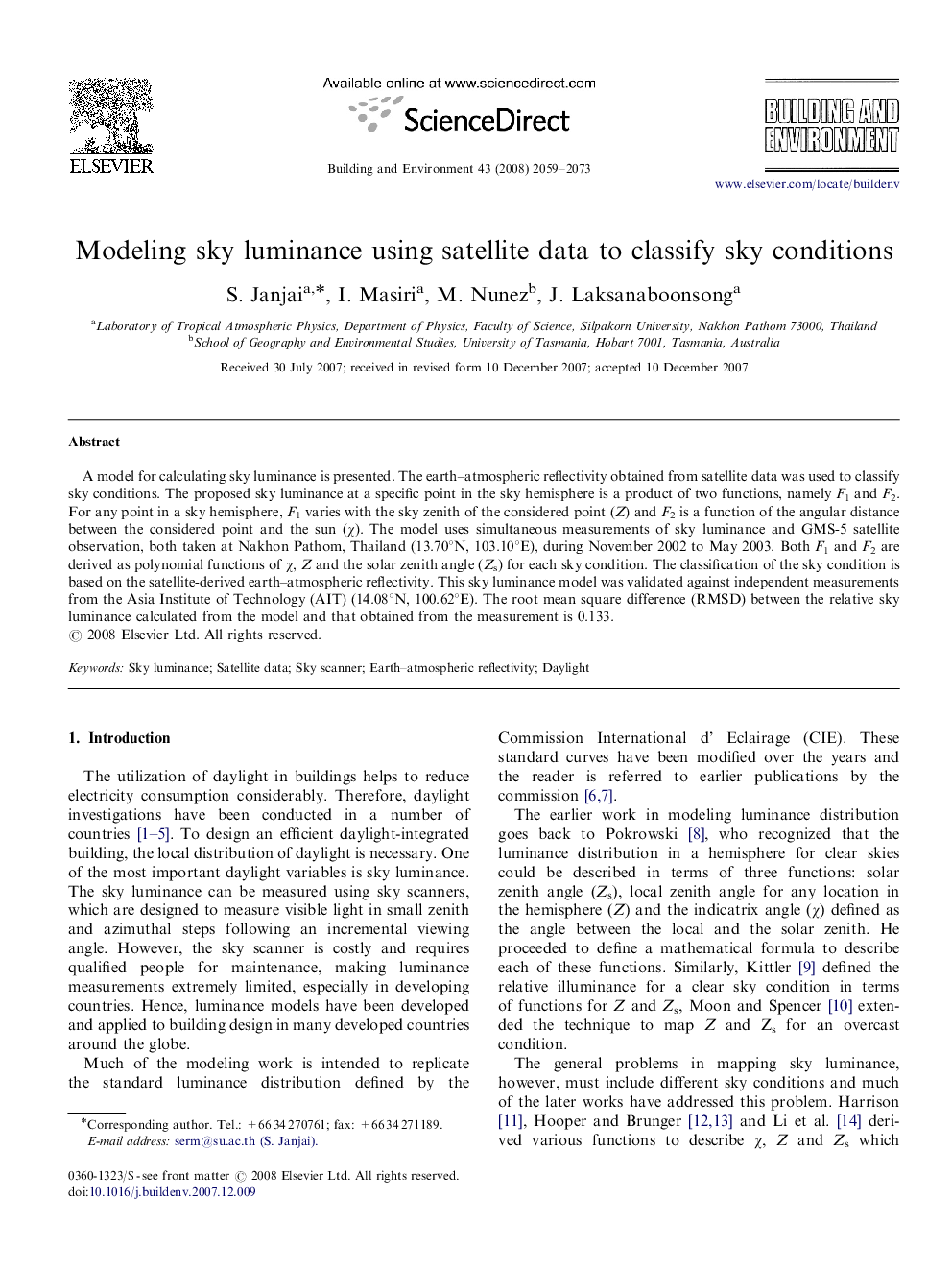| کد مقاله | کد نشریه | سال انتشار | مقاله انگلیسی | نسخه تمام متن |
|---|---|---|---|---|
| 249631 | 502620 | 2008 | 15 صفحه PDF | دانلود رایگان |

A model for calculating sky luminance is presented. The earth–atmospheric reflectivity obtained from satellite data was used to classify sky conditions. The proposed sky luminance at a specific point in the sky hemisphere is a product of two functions, namely F1 and F2. For any point in a sky hemisphere, F1 varies with the sky zenith of the considered point (Z) and F2 is a function of the angular distance between the considered point and the sun (χ). The model uses simultaneous measurements of sky luminance and GMS-5 satellite observation, both taken at Nakhon Pathom, Thailand (13.70°N, 103.10°E), during November 2002 to May 2003. Both F1 and F2 are derived as polynomial functions of χ, Z and the solar zenith angle (Zs) for each sky condition. The classification of the sky condition is based on the satellite-derived earth–atmospheric reflectivity. This sky luminance model was validated against independent measurements from the Asia Institute of Technology (AIT) (14.08°N, 100.62°E). The root mean square difference (RMSD) between the relative sky luminance calculated from the model and that obtained from the measurement is 0.133.
Journal: Building and Environment - Volume 43, Issue 12, December 2008, Pages 2059–2073